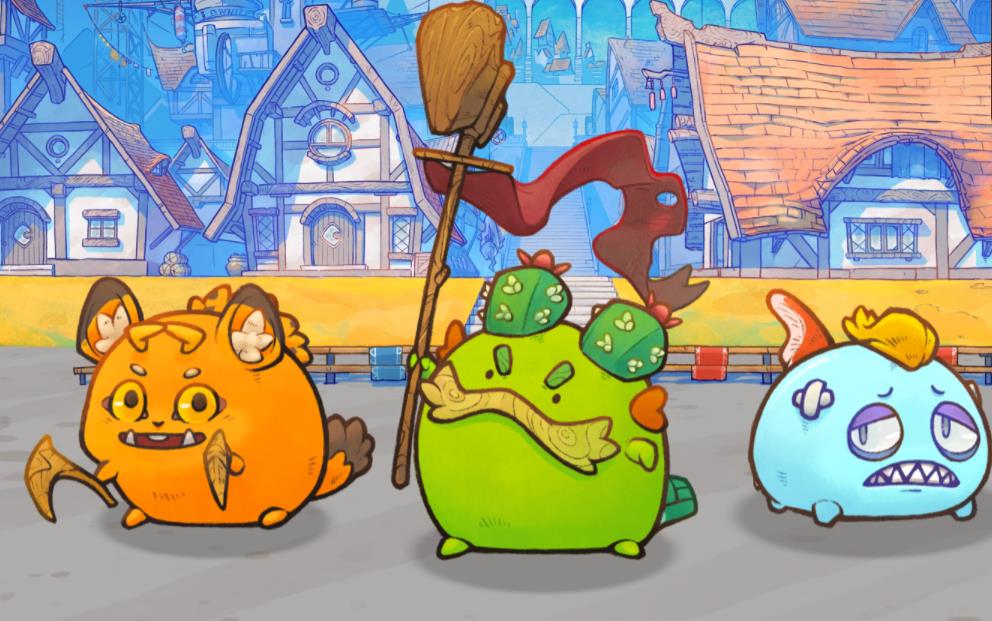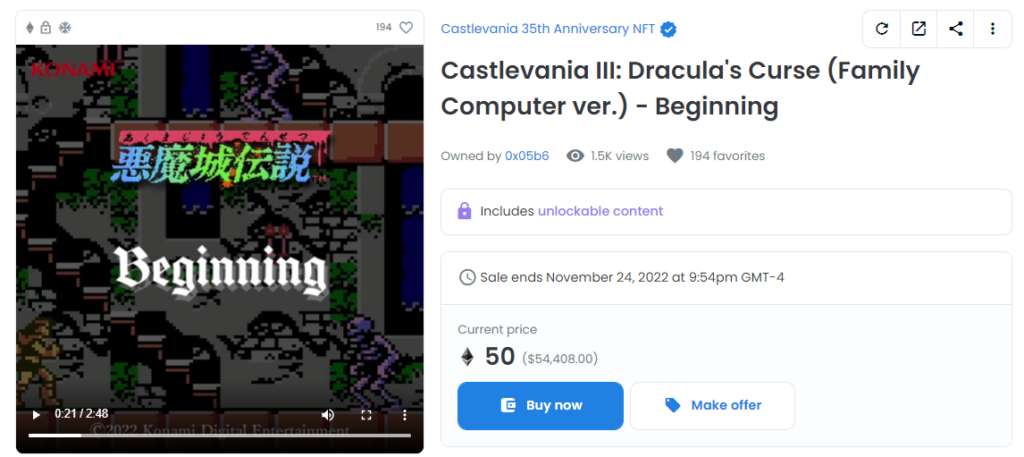“NFT” is the new buzzword, and gaming appears to be a logical home for them. But, not all gamers welcome the idea of having NFTs intrude on their favorite title.

NFTs are opening huge avenues for revenue in the modern video game market. Developers are hitching a ride on this cash cab in a few different ways. As technology evolves, they are slowly getting more integrated with the market.
First, what are NFTs? In simplest terms, an NFT, or non-fungible token, can be just about anything digital—animate GIFs, artwork, songs, a Tweet, video game objects, and more. These can be bought and sold, with ownership tracked by the blockchain.
Many consumers think that NFTs are simply receipts to owning an image. That’s true for many of the NFTs currently on the market, but some innovators are beginning to use them in games. In their first experiment with the technology, Ubisoft created unique items for Tom Clancy’s Ghost Recon Breakpoint that players could fully own with Ubisoft Quartz. Then they could sell these cosmetics, items that are dressable and change the appearance of your character, on a secondhand market to other people playing the game—and only the owner of that NFT could use that specific cosmetic. The items in question generally shared a basic model but had a serial number printed on the model, so they were very similar but nevertheless unique. For instance, users could own P320 skins that change the color of their gun.
Ubisoft proved that NFTs could be incorporated into a game in a similar way Steam has its marketplace of digital goods. However, players and fans have been slow to support Ubisoft’s endeavor, to put it mildly. Ubisoft’s Vice President at the company’s Strategic Innovations Lab has stated that players don’t fully understand the positives of using NFTs in games and need to extend their vision to post-game, when they can resell their items.
So, is the reaction to Ubisoft’s use of NFTs the exception or the rule? It’s clear that NFTs and how game companies are using them continue to evolve. Indeed, there is more than one way to skin an object, and, similarly, there is more than one way that game companies are using this new technology.
Cancellations after backlash
It’s impossible to talk about NFTs without discussing the consumers’ distaste for them. Gamers and game developers alike have massively pushed back against NFTs. Any news bite on Twitter released by industry giants about their plans with NFTs have venomous replies.
On January 31, 2022, Team17, a popular UK-based indie game developer and publisher, announced they were making NFT artwork of their Worms game series. After that announcement, several studios working with Team17 publicly announced they would not “engage with NFTs,” including Aggro Crab, Playtonic, and Ghost Town Games. These studios, alongside their consumers, made a massive uproar on Twitter. After just 24 hours following Team17’s announcement that it would sell NFT game collectibles, the developer did an about-face and stated that it has decided to “step back from the NFT space” after the outcry of its fans, players, and partners.
Other famous back-outs include the social platform Discord and even video game voice actor Troy Baker in association with voice-based NFTs from VoiceVerse, which he initially endorsed.
Making merch for the game
The least intrusive way developers integrate NFTs with their games is by making merchandise. These products have no effect on the game. They are simply extra goodies that fans of the game might want to purchase. NFTs are typically fan art. Some companies have taken it further, but this is gently testing the waters.
The biggest name incorporating NFTs in this way is Konami. They announced in their 2021 financial breakdown that they “will be selling NFTs in an effort to preserve content that has been loved by our customers as commemorative art.” And they delivered.

Konami sold 14 NFTs on OpenSea to celebrate Castlevania’s 35th anniversary. As of this writing, one of the NFTs is currently for sale for 50 Ethereum. That’s easily between $55,000 and $80,000 (cryptos are volatile, after all). This specific NFT is a music track from the beginning of the game. Nintendo still owns that music. Effectively, this NFT is just merch for people who want to own a piece of Castlevania.
In-game cosmetics as sellable NFTs
Digital items have real worth. People pay for digital items—virtual economies exist everywhere, just check the MMO best-seller lists. MMORPGs RuneScape, TERA (rest in peace), and EVE Online all give/gave gamers a way to pay money for in-game currency and items.
The biggest name in gaming is Steam. Over half the world’s PC game downloads occur on their platform, and they have a huge marketplace of unique items that individuals own, buy, and sell. A particular pair of gloves in Counter-Strike: Global Offensive has sold for just under $2,000. Digital gloves! A skin in a video game that has no bearing on gameplay whatsoever.
It’s important to note that these digital items are less secure than using NFTs. Using NFTs are better for the consumer because it gives them a receipt, and having access to the blockchain allows them to view their transaction history without a company serving as a middleman. If Steam goes under (it won’t, but stick with me), the person who owns those gloves are owning absolutely nothing. If they had an NFT instead, they would at least still have their spot on the blockchain.
Re-creating a system like the Steam Community Market is a huge undertaking, but consumers love it. Ubisoft tried their hand at this, creating their new platform Ubisoft Quartz. It currently is only available for one game—Ghost Recon Breakpoint, a title that mostly failed financially and is going unsupported. They are back to the drawing board and have stated they would be back in the ring eventually. I’m no economist. I don’t know what made it fail, but we can look at its history and what it provided as opposed to Steam.
In its short four-month life span, Ubisoft Quartz released free Quartz Digits drops to players at a certain level. These Digits drops were just like Steam items—a range of cosmetic items that looked identical albeit the Digits were labeled with a serial number.

Players could sell their NFT cosmetics on the available Ubisoft marketplaces: Objkt and Rarible. Unfortunately for Ubisoft, the numbers just weren’t there. Why? Among the possible reasons: Steam’s big markets are for multiplayer games and Breakpoint is mostly single-player. Also, Steam is more generous with free items.
It can work, though. NFTs as cosmetics need some reworking, but the framework is there. We’ll see how Ubisoft’s second stab at the market pans out.
Items that affect gameplay
Two other methods ask less commitment from the game company and the players. They can be extra mechanics built on top of an existing game. That’s the extent that big game companies are taking—keeping a watchful eye on the market and dipping their toes in.
But they aren’t the only ones implementing NFTs into games. An entire genre titled play-to-earn (P2E) games have sprouted up, backed by the blockchain to allow their players to make money as they play. Many types of P2E games have popped up, becoming huge heavy hitters. The most popular P2E game, Axie Infinity, hit a $3 billion valuation in late 2021.
Axie Infinity offers a market where players can buy and sell Axies (think NFT Pokemon). The company takes a 4.25% cut on every transaction. Players create a team with their Axies and take on story modes or the arena—and using free Axies severely impedes progress. To play properly, players need to buy a team and use them to make money. A decent team costs around $300.
The mix of video games and money makes for funny discourse. Redditors chat about their cute little monsters like stocks. How much did you invest in this Axie? What’s your ROI? P2Es are hot in Southeast Asia, specifically Vietnam and the Philippines, allowing people without reliable or cheap access to banking services a way to make money in their crypto wallets.
What do we think?
NFTs are here to stay. Like the metaverse and other parts of Web3, it’s difficult to say how much of our lives they are going to encompass. Creators say business will be done in the metaverse and it will change how we work—look, it took a pandemic to have mainstream employers even consider remote work.
However, it’s hard to predict the future of NFTs and gaming because gamers are vehemently opposed to them. Read any post on Twitter about Konami’s Castlevania NFTs and watch the bloodbath ensue. But it seems to me that companies have spotted a gold mine and are progressing full steam ahead towards NFTs, as Twitter itself has not backed down on their NFT profile picture implementation.
One of the biggest issues consumers have with NFTs and the blockchain is how environmentally destructive they are. Technology will evolve, and roadblocks will disappear. I will not personally dabble with NFTs—they incentivize companies to put money in front of integrity.
I think that bigger game companies will see the success of P2E games like Axie Infinity and want to replicate a part of that success. Consumers already use platforms like the Steam market for cosmetic items, and implementing digital goods into NFTs only makes them more secure for the consumer. It will take a while, probably a long while, but NFTs will become more important to games with economies, single-player games will get art, and gamers interested in making money will have plenty of P2Es to choose from.





